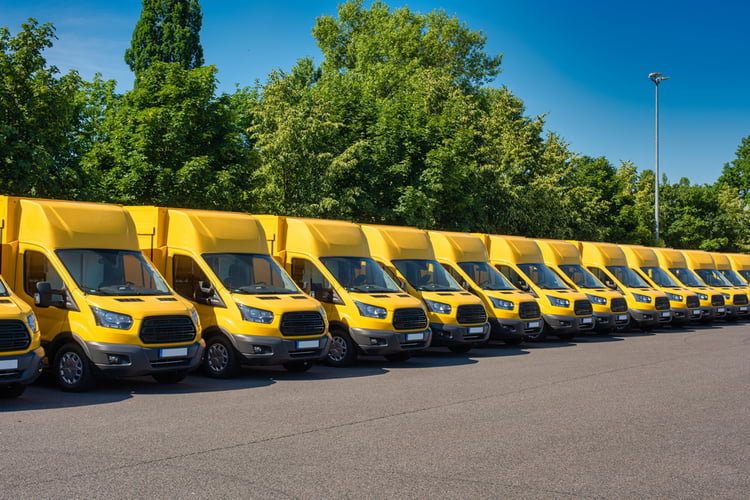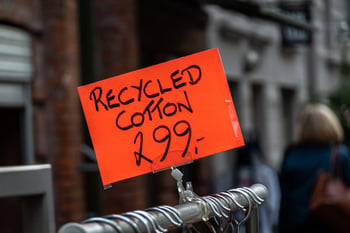
Sustainability is defined as “meeting the needs of the present without compromising the ability of future generations to meet their own needs.” Considering this, a supply chain is responsible if it is truly sustainable. However, reducing your impact on the environment does not ensure ethical responsibility in supply chain management.
Unfortunately, most supply chains have a dark side. From safety and labor issues to pollution violations and unethical sourcing, businesses make poor choices that can lead to legal and reputation troubles.
But many businesses in this space are also trying to do better. Knowing that missteps could impact overall results and understanding it’s just the right thing to do, organizations are vowing to act more responsibly and sustainably. So how can a responsible supply chain also be an environmentally sustainable one?
The Components of a Sustainable Supply Chain
A sustainable supply chain isn’t just good for business; it’s also good for the planet. But too few businesses are truly committing to supply chain sustainability.
Numerous studies have found that, although many businesses claim a commitment to sustainability, they are operating outside the guidelines to achieve these goals. In one review of about 40,000 corporate responsibility reports, only about five percent provided a quantifiable impact on ecology.
So, what does sustainability actually mean? Several decades ago, sustainability was equated with being eco-friendly. But it has evolved into something much more.
1. Green Supply Chain
 You can achieve a green supply chain by successfully integrating supply chain management with environmentally responsible principles. This includes materials sourcing, product design, manufacturing, logistics, and product management for end-of-life.
You can achieve a green supply chain by successfully integrating supply chain management with environmentally responsible principles. This includes materials sourcing, product design, manufacturing, logistics, and product management for end-of-life.
With the popularity of eCommerce, there are more shopping and product choices than ever. Businesses must find green supply chain solutions to remain competitive. Fortunately, organizations can use various technology solutions to identify risks and take advantage of opportunities to improve efficiency and minimize waste.
2. Circular Supply Chain
In circular supply chains, products are transformed back to raw materials and remade into marketable products, which allows businesses to achieve the environmental benefits of recycling while recouping some of the costs at the same time.
According to a recent Gartner survey, about 70% of supply chain participants plan to invest in the circular economy. It’s a win-win business model that’s supported by various initiatives like using recycled materials in manufacturing.
3. Transparent Supply Chain
There is a significant visibility gap in modern supply chains, which limits organizations’ ability to implement sustainability initiatives. Transparency in the supply chain refers to a business’s willingness and ability to openly disclose information about the origin of labor and materials.
Fortunately, using digital technology solutions like RFID sensors and blockchain, supply chain leaders can obtain and share accurate data about products and suppliers throughout a product’s journey.
The Benefits of Instilling Responsibility and Sustainability in Supply Chains
For businesses that make more responsible and sustainable supply chains a priority, there are several potential benefits, including:
1. Cost Control
 PWC surveyed more than 6,000 senior supply chain leaders between 2019 and 2020. Based on their investment and implementation levels in supply chain technologies, they were ranked from Digital Novices to Digital Champions. Those ranked as Digital Champions reported an average drop of 7% in supply chain operations costs due to digital transformation. And half of that group indicated they would continue to make investments in supply chain transparency and sustainability a priority.
PWC surveyed more than 6,000 senior supply chain leaders between 2019 and 2020. Based on their investment and implementation levels in supply chain technologies, they were ranked from Digital Novices to Digital Champions. Those ranked as Digital Champions reported an average drop of 7% in supply chain operations costs due to digital transformation. And half of that group indicated they would continue to make investments in supply chain transparency and sustainability a priority.
2. Building Brand Reputation and Loyalty
Even before the pandemic, consumer preferences and awareness surrounding sustainability businesses had been increasing steadily. According to figures recently released by Forbes, consumers are up to 88% more likely to be loyal to brands that demonstrate strong environmental and social responsibility. More than ever, businesses that focus on and emphasize these issues are gaining a competitive advantage.
3. Minimizing Vulnerability and Risk
We still occasionally hear stories about how a dangerous or tainted product made it into the supply chain and caused some type of harm. Aside from potential injuries or other consequences, these occurrences can be financially devastating for a business. When organizations put more responsible and sustainable measures in place, they minimize the risks of working with unscrupulous suppliers and provide methods of end-to-end tracking of materials and labor.
Leveraging Technology to Improve Sustainability
A commitment to responsibility and sustainability is the first step for most organizations. But it usually takes some form of digital transformation to achieve their sustainability goals. Some of the ways businesses are accomplishing this include:
1. Artificial Intelligence
Artificial intelligence and machine learning technologies allow for the collection and analysis of various, disparate sets of data across the supply chain. For example, companies can use AI to track packages in real time and figure out ways to fully utilize available logistics capabilities to save resources, reduce energy usage, and lower costs.
2. Automation and Robotics
 Warehouses can employ automation and robotics solutions for inventory management and order fulfillment activities. This improves efficiency, reduces costly errors, and saves on fossil fuel usage throughout the logistics network.
Warehouses can employ automation and robotics solutions for inventory management and order fulfillment activities. This improves efficiency, reduces costly errors, and saves on fossil fuel usage throughout the logistics network.
3. Internet of Things (IoT)
When connected machines and devices within the supply chain can share information, they become part of a more sustainable network. These valuable connections enable supply chain partners to eliminate redundant workflows, optimize performance, and improve transparency.
4. Sensors
RFID tags and other similar sensors can be attached to products, machinery, and raw materials anywhere along the supply chain. When supply chain partners are truly connected, they can view vital information scanned by readers to provide real-time visibility throughout the supply chain.
5. Blockchain
Blockchain is becoming increasingly used in sustainable supply chains as a single trusted record source. Through the use of sensors, like RFID tags, materials and products are tracked so there are no questions about their origin, handling, or quality.
A sustainable supply chain is one that successfully integrates environmentally responsible and ethical practices into a competitive model. Injecting complete transparency throughout the supply chain is vital to this process. Digital innovation and the role of various supply chain technology solutions are playing a major role in the evolution of supply chain responsibility and sustainability.

